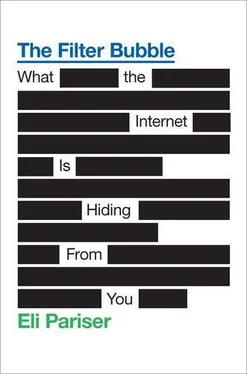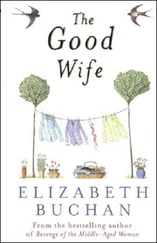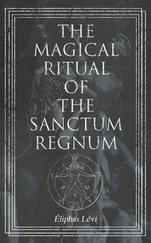92 “On Adderall, I was able to work”:Joshua Foer, “The Adderall Me: My Romance with ADHD Meds,” Slate, May 10, 2005, www.slate.com/id/2118315.
92 “pressures [to use enhancing drugs] are only going to grow”:Margaret Talbot, “Brain Gain: The Underground World of ‘Neuroenhancing Drugs,’” New Yorker, Apr. 27, 2009, accessed Dec. 14, 2010, www.newyorker.com/reporting/2009/04/27/090427fa_fact_talbot?currentPage=all.
93 “I think ‘inside the box’”:Erowid Experience Vaults, accessed Dec. 14, 2010, www.erowid.org/experiences/exp.php?ID=56716.
93 “a generation of very focused accountants”:Talbot, “Brain Gain.”
94 “an analogy no one has ever seen”:Arthur Koestler, Art of Creation (New York: Arkana, 1989), 82.
94 “uncovers, selects, re-shuffles, combines, synthesizes”:Ibid., 86.
95 the key to creative thought:Hans Eysenck, Genius: The Natural History of Creativity (Cambridge: Cambridge University Press, 1995).
95 box represents the solution horizon:Hans Eysenck, “Creativity and Personality: Suggestions for a Theory,” Psychological Inquiry, 4, no. 3 (1993): 147–78.
97 no idea what they’re looking for:Aharon Kantorovich and Yuval Ne’eman, “Serendipity as a Source of Evolutionary Progress in Science,” Studies in History and Philosophy of Science, Part A, 20, no. 4: 505–29.
98 attach the candle to the wall:Karl Duncker, “On Problem Solving,” Psychological Monographs , 58 (1945).
98 reluctance to “break perceptual set”:George Katona, Organizing and Memorizing (New York: Columbia University Press, 1940).
99 creative people tend to see things:Arthur Cropley, Creativity in Education and Learning (New York: Longmans, 1967).
99 “sorted a total of 40 objects”:N. J. C. Andreases and Pauline S. Powers, “Overinclusive Thinking in Mania and Schizophrenia,” British Journal of Psychology 125 (1974): 452–56.
99 a “thing with weight”:Cropley, Creativity, 39.
100 “Stop counting—there are 43 pictures”:Richard Wiseman, The Luck Factor (New York: Hyperion, 2003), 43–44.
101 bilinguists are more creative than monolinguists:Charlan Nemeth and Julianne Kwan, “Minority Influence, Divergent Thinking and Detection of Correct Solutions,” Journal of Applied Social Psychology , 17, I. 9 (1987): 1, accessed Feb. 7, 2011, http://onlinelibrary.wiley.com/doi/10.1111/j.1559-1816.1987.tb00339.x/abstract.
101 foreign ideas help us:W. M. Maddux, A. K. Leung, C. Chiu, and A. Galinsky, “Toward a More Complete Understanding of the Link Between Multicultural Experience and Creativity,” American Psychologist 64 (2009): 156–58.
102 illustrates how creativity arises:Steven Johnson, Where Good Ideas Come From: The Natural History of Innovation (New York: Penguin, 2010), ePub Bud , accessed Feb 7, 2011, www.epubbud.com/read.php?g=LN9DVC8S.
102 “wide and diverse sample of spare parts”:Ibid., 6.
102 “environments that are powerfully suited”:Ibid., 3.
102 “ ‘serendipity’ article in Wikipedia”:Ibid., 13.
103 “shift from exploration and discovery”:John Battelle, The Search: How Google and Its Rivals Rewrote the Rules of Business and Transformed Our Culture (New York: Penguin, 2005), 61.
103 “database of intentions”:Ibid.
104 “We need help overcoming rationality”:David Gelernter, Time to Start Taking the Internet Seriously, accessed Dec. 14, 2010, www.edge.org/3rd_culture/gelernter10/gelernter10_index.html.
105 “a vast island called California”:Garci Rodriguez de Montalvo, The Exploits of Esplandian (Madrid: Editorial Castalia, 2003).
Chapter Four: The You Loop
109 “what a personal computer really is”:Sharon Gaudin, “Total Recall: Storing Every Life Memory in a Surrogate Brain,” ComputerWorld, Aug. 2, 2008, accessed Dec. 15, 2010, www.computerworld.com/s/article/9074439/Total_Recall_Storing_every_life_memory_in_a_surrogate_brain.
109 “You have one identity”:David Kirkpatrick, The Facebook Effect: The Inside Story of the Company That Is Connecting the World (New York: Simon and Schuster, 2010), 199.
109 “I behave a different way”:“Live-Blog: Zuckerberg and David Kirkpatrick on the Facebook Effect,” transcript of interview, Social Beat , accessed Dec. 15, 2010, http://venturebeat.com/2010/07/21/live-blog-zuckerberg-and-david-kirkpatrick-on-the-facebook-effect.
110 “Same awkward self”:Ibid.
110 that would be the norm:Marshall Kirkpatrick, “Facebook Exec: All Media Will Be Personalized in 3 to 5 Years,” ReadWriteWeb , Sept. 29, 2010, accessed Dec. 15, 2010, www.readwriteweb.com/archives/facebook_exec_all_media_will_be_personalized_in_3.php.
110 “a world that all may enter”:John Perry Barlow, A Declaration of the Independence of Cyberspace, Feb. 8, 1996, accessed Dec. 15, 2010, https://projects.eff.org/~barlow/Declaration-Final.html.
111 pseudonym with the real name:Julia Angwin and Steve Stecklow, “‘Scrapers’ Dig Deep for Data on Web,” Wall Street Journal, Oct. 12, 2010, accessed Dec. 15, 2010, http://online.wsj.com/article/SB10001424052748703358504575544381288117888.html.
111 tied to the individual people who use them:Julia Angwin and Jennifer Valentino-Devries, “Race Is On to ‘Fingerprint’ Phones, PCs,” Wall Street Journal , Nov. 30, 2010, accessed Jan. 30, 2011, http://online.wsj.com/article/SB10001424052748704679204575646704100959546.html?mod=ITP_pageone_0.
112 information sources make us freer:Yochai Benkler, “Of Sirens and Amish Children: Autonomy, Information, and Law,” New York University Law Review , 76 no. 23 (April 2001): 110.
115 “more than the bits of data”:Daniel Solove, The Digital Person: Technology and Privacy in the Information Age (New York: New York University Press, 2004), 45.
116 how someone behaves from who she is:E. E. Jones and V.A. Harris, “The Attribution of Attitudes,” Journal of Experimental Social Psychology 3 (1967): 1–24.
116 electrocute other subjects:Stanley Milgram, “Behavioral Study of Obedience,” Journal of Abnormal and Social Psychology 67 (1963): 371–78.
116 The plasticity of the self:Paul Bloom, “First Person Plural,” Atlantic (Nov. 2008), accessed Dec. 15, 2010, www.theatlantic.com/magazine/archive/2008/11/first-person-plural/7055.
117 aspirations played against their current desires:Katherine L. Milkman, Todd Rogers, and Max H. Bazerman, “Highbrow Films Gather Dust: Time-Inconsistent Preferences and Online DVD Rentals,” Management Science 55, no. 6 (June 2009): 1047–59, accessed Jan. 29, 2011, http://opimweb.wharton.upenn.edu/documents/research/Highbrow.pdf.
117 “want” movies like Sleepless in Seattle :Milkman, et al., “Highbrow Films Gather Dust.”
118 “nuances of what it means to be human”:John Battelle, phone interview with author, Oct. 12, 2010.
Читать дальше











